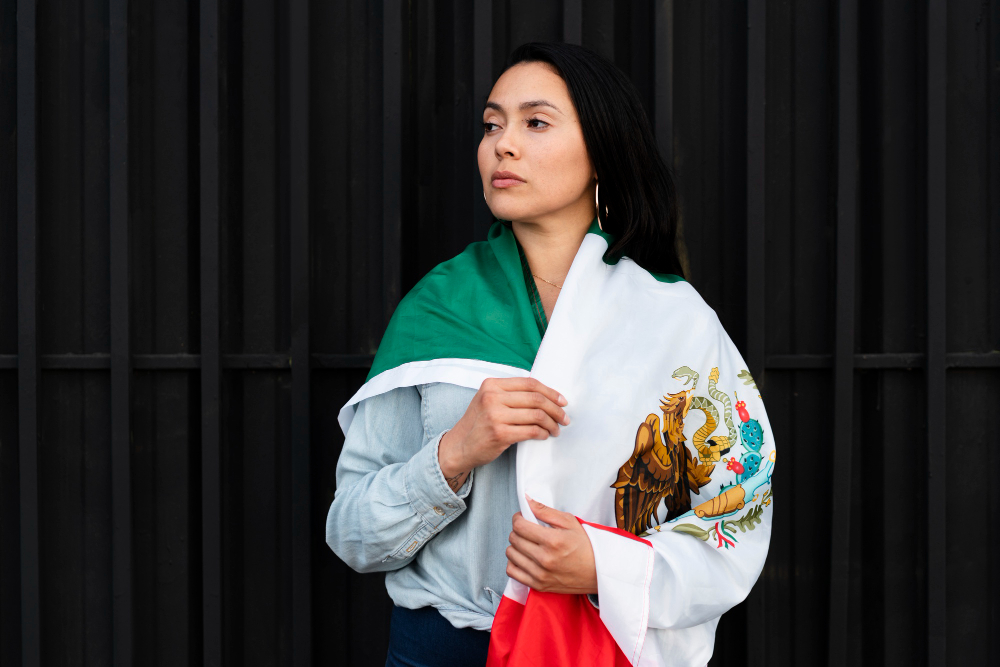The power of storytelling goes beyond words. For generations, Chicana women have used their voices to lead cultural conversations, challenge systemic injustices, and shape the identity of the Mexican-American community. Today, we’re witnessing a bold resurgence of Chicana expression, transcending art, literature, music, and activism to assert a renewed vision of feminism and cultural pride.
This blog explores how Chicana women are leading the way in identity, activism, and creative expression while championing representation and inspiring a new generation in the pursuit of equality and cultural acknowledgment.
What Does It Mean to Be Chicana?
Before we explore the voices rising today, it’s essential to understand what it means to be Chicana. The term “Chicana” traditionally refers to Mexican-American women who proudly identify with both their Mexican heritage and their American experience. But it’s more than just an identification of dual culture. For many, being Chicana signifies a political and social identity rooted in resistance, resilience, and a shared history of surviving and thriving within a society structured by inequalities.
Chicana feminism arose during the Chicano Movement of the 1960s and 70s as a response to the intersectional challenges faced by women in their communities. While the broader Chicano Movement fought for civil rights, equality, and cultural preservation, Chicana feminists highlighted the additional gender discrimination they endured, even from within their movement. Their fight then, much like their voice today, was against racism, patriarchy, and classism.
Chicana Voices in Art and Literature
Art has always been at the heart of Chicana self-expression, and its resurgence in recent years is nothing short of revolutionary. Chicana artists are reclaiming narratives through vibrant murals, intimate canvases, public installations, and digital media.
Take Judy Baca, one of the most iconic Chicana muralists. Her epic works like The Great Wall of Los Angeles celebrate the untold stories of marginalized communities and have influenced a new wave of feminist visualization. Similarly, contemporary creators like Barbara Carrasco and Alma López continue breaking boundaries by addressing themes of identity, violence, and social inequality through their powerful artwork.
Chicana literature follows the same path of rebellion and authenticity. Writers such as Sandra Cisneros (The House on Mango Street) have opened the door for dozens of new voices to tell deeply personal yet universally relatable stories. Today, poets like ire’ne lara silva and novelists like Erika L. Sánchez (I Am Not Your Perfect Mexican Daughter) confront issues like mental health, generational trauma, and societal expectations. These creators are not just amplifying Chicana narratives but challenging the publishing world to center diverse voices unapologetically.
Activism Rooted in Identity
Chicana activism has long been about leading change from the grassroots level. It weaves together the struggles of race, gender, and class, creating a fierce movement that cannot be ignored. At the heart of this activism are leaders redefining what it means to fight for justice.
Activists like Dolores Huerta, co-founder of the United Farm Workers, represent the enduring spirit of Chicana leadership. Her rally cry of “Sí, Se Puede” (“Yes, We Can”) still echoes through modern movements advocating labor rights, immigration reform, and women’s rights.
Today, younger generations are stepping forward to continue the legacy while breaking new ground. Organizers like Marisa Franco of Mijente focus on mobilizing Latinx people for environmental justice, immigrants’ rights, and LGBTQ+ equality. These women embody a community-first approach, fighting systemic oppression by building coalitions and empowering communities to use their voices.
Digital activism has also reshaped Chicana advocacy. Social media platforms provide space for micro-revolutions, allowing activists to educate and organize while reaching a global audience. From TikToks about cultural appropriation to Instagram posts celebrating traditional customs, Chicana activists are bridging ancestral wisdom with contemporary platforms to forge a new path.
Representation in Pop Culture
How is representation in mainstream media shaping today’s cultural conversation? Pop culture is witnessing an exciting wave of Chicana visibility. Multi-talented icons such as Selena Gomez, Jessica Alba, and Eva Longoria are using their platforms to champion stories that reflect Mexican-American experiences. With films, music, and shows increasingly reflecting authentic stories and diverse casts, representation is opening doors for young Chicanas to see themselves on screen and imagine new possibilities.
What’s more, the success of series such as Netflix’s Gentefied and films like Coco highlight the beauty and challenges of life as Mexican-Americans, resonating with a broad audience while humanizing the Chicana experience.
Music, too, plays a crucial role in amplifying Chicana voices. Artists like Lila Downs and Becky G blend traditional Mexican influence with contemporary beats, proving that cultural identity and creative evolution go hand in hand.
Why Chicana Voices Matter
The voices of Chicana women serve as a bridge between past and future. These women preserve their culture while demanding progress, striking a delicate yet powerful balance that resonates with anyone who has felt caught between worlds. Their perspective is a testament to resilience and an inspiration for all who work toward social equity and cultural pride.
By integrating activism, art, literature, and pop culture, Chicanas are driving fundamental cultural conversations that foster understanding, inclusion, and change. Their contributions have ignited movements, fostered community-building, and uplifted countless individuals, proving that there’s immense power in reclaiming a narrative.
It’s clear that the voices of Chicana women are not just rising; they are roaring.
Support and Celebrate Chicana Creativity
The cultural impact of Chicana voices is undeniable, and the opportunity to support their work is vital. Seek out and celebrate their art, read their literature, and engage with their activism to deepen your understanding of their critical role in shaping societal progress.



